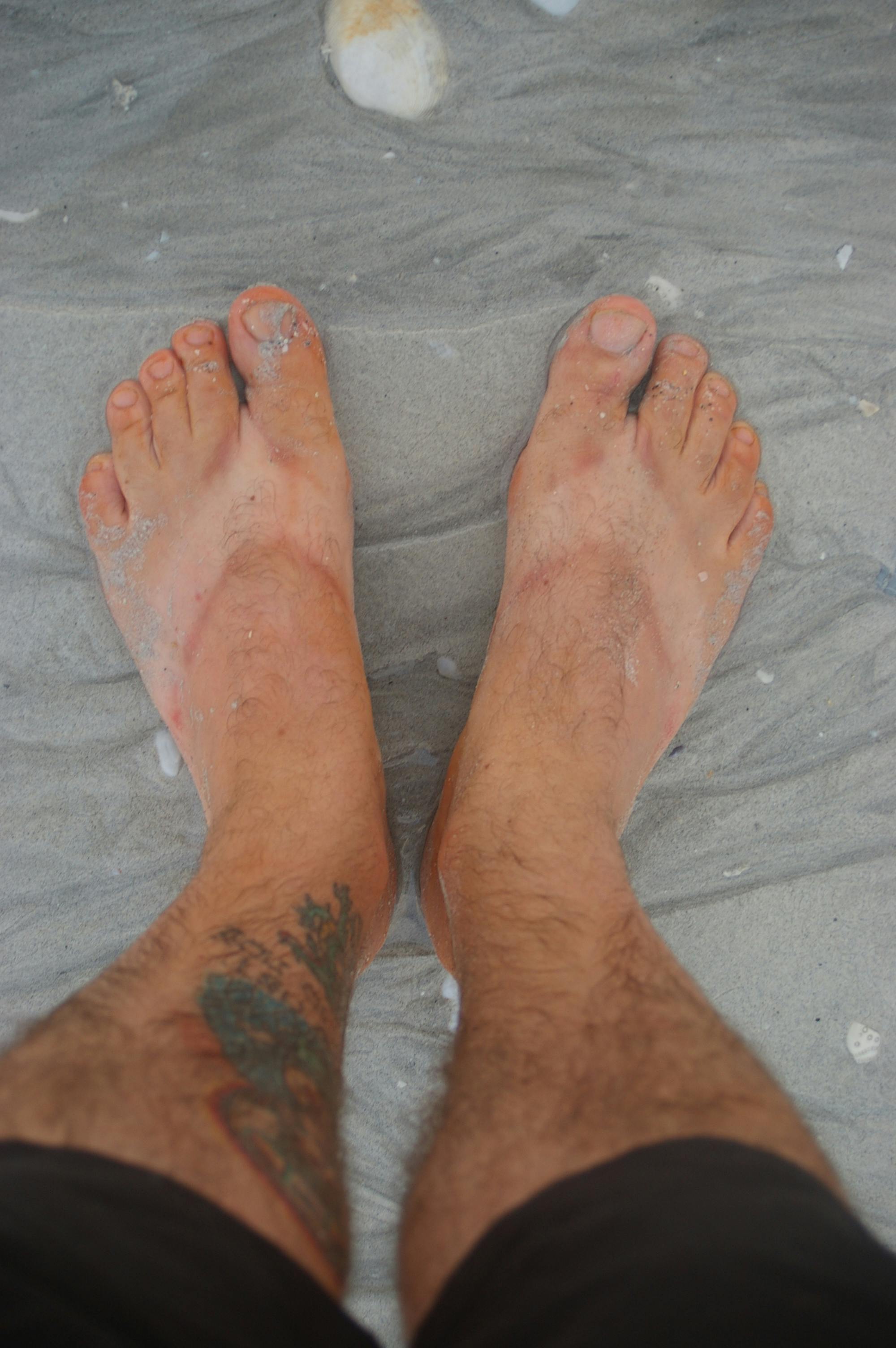Easy Recommendations about Plantar Fasciitis Treatment
For some professional athletes, just changing running shoes can substantially alleviate plantar fascia discomfort. A physical therapist can use a number of various taping strategies to support the plantar fascia, providing it a chance to heal. Some shoes can be fitted with inserts. One example is an orthotic, which spans the length of the shoe.
Another option is a heel cup. This insert is designed to support and cushion the heel. Plantar fasciitis is connected with less versatility in the ankle, Achilles tendon, and calf muscles. Mild stretching to enhance versatility can make the biomechanics of standing, strolling, and running less demanding for the plantar fascia.
Utilizing mild pressure, roll the tennis ball backward and forward under the foot. Stand 18 inches away from a wall with feet about 6 inches apart and put hands against the wall, at shoulder height. Without moving feet, lean into the wall, flexing the foot and extending the Achilles tendon and calf muscles Sit on the floor with legs directly in front.
Aspects of Plantar Fasciitis Treatment You Ought To Know
Stretches like these last two, in which the top of the foot and toes approach the shin, are called dorsiflexion stretches. Using a cold-pack or bag of ice to bottom of the foot might supply pain remedy for plantar fasciitis. Relief can likewise be found by rolling the bottom of the foot on a frozen plastic water bottle.
Procedure Principles. For runners, increasing the variety of actions per mileusing a much shorter stride but increasing cadence to keep speedmay reduce the stress on the plantar fascia even though there will be more steps per minute.1.Extra weight puts an increased pressure on the plantar fascia tissue. Shedding excess pounds will lighten the load on the body's musculoskeletal system, consisting of the plantar fascia.
This avoids the plantar fascia from resting in a contracted position. (Not surprisingly, many individuals find these splints hard to oversleep.). While it is not thought about standard treatment, deep myofascial massage might promote blood flow and healing. While not all professionals agree, some believe using manual manipulation/mobilization (by a chiropractic doctor or other certified health professional) together with workout is a reliable method to treat plantar fasciitis.2, Individuals with relentless, moderate to serious cases of plantar fasciitis, may use these non-medical treatments in combination with medications, injections, or surgical treatments.
20 Customer Service Plantar Fasciitis Treatment Methods

Medications are not a treatment for plantar fasciitis and should be used in conjunction with other treatments. Non-steroidal anti-inflammatory drugs are utilized to reduce swelling and inflammation, and are suggested for patients experiencing moderate to serious pain (Informative Post). NSAIDs consist of aspirin (e.g. Bayer), ibuprofen (e.g. Advil), naproxen (e.g. Aleve), and cox-2 inhibitors.
dexamethasone) through healthy skin to the sore location.1 Iontophoresis might be suggested to patients with plantar fasciitis who can't endure injections or wish to prevent injections. If non-medical treatments and medications do not supply relief from plantar fasciitis, patients might think about injections. 1. Wellenkotter J, Kernozek TW, Meardon S, Suchomel T.

Int J Sports Med. 2014; 35( 9 ):779 -84.2. Bronfort G, Haas M, Evans R, Leininger B, Triano J. Effectiveness of manual treatments: the UK evidence report. Chiropr Osteopat. 2010; 18:3.3. Clar C, Tsertsvadze A, Court R, Hundt GL, Clarke A, Sutcliffe P. Clinical effectiveness of manual treatment for the management of musculoskeletal and non-musculoskeletal conditions: systematic evaluation and update of UK proof report.
Essential Strategies To Plantar Fasciitis Treatment
The plantar fascia is a long, thin ligament present along the bottom of the foot that develops the arch of the foot. It extends from the heel bone, and after that divides and fans out to connect itself to the toes. Plantar fasciitis is a condition where the plantar fascia ends up being swollen from overstretching or overuse, triggering discomfort in the heel and bottom of the foot.
Plantar fasciitis takes place when you strain or aggravate the plantar fascia ligament. Repetitive strain can lead to small tears in the ligament, causing pain and swelling, which can make strolling hard. Stress can take place due to: High or low foot arch Weight problems or unexpected weight gain Tight Achilles tendon which connects the calf muscles to the heel Starting a brand-new activity or increasing the intensity of an activity Wearing improper shoes with soles that are too soft, do not fit well or offer poor arch support The significant complaint of plantar fasciitis is pain and tightness in the heel and foot.
Your physician might view how you stand and walk, and assess associated conditions such as high arches. X-rays of the foot can be taken if your physician suspects a stress fracture, a hairline fracture in the bone, or other associated conditions such as a heel spur, which is additional calcium deposit on the heel bone.
Some Examples Of Plantar Fasciitis Treatment
Conservative treatment measures include: Rest: Rest is the initial step that is considered for decreasing pain and preventing further damage to the ligament. Ice: Rolling your foot over ice can be extremely reliable in lowering swelling, and is recommended for 20 minutes, 3-4 times a day Medications: NSAIDs (non-steroidal anti-inflammatory drugs) might be prescribed for relief of discomfort and swelling Exercise: calf stretches and plantar fascia stretches work in relieving pain A steroid injection might be administered into the plantar fascia for lowering pain and inflammation Helpful shoes and orthotics may likewise be suggested to lower the pain while walking or standing Night splints can be recommended by your doctor to assist extend the plantar fascia while sleeping Physical therapy may be recommended for guideline on extending exercises, massage and ice treatments PT may use extracorporeal shockwave therapy (ESWT), which utilizes high-energy shockwave impulses to promote healing of the damaged plantar fascia tissues Surgical treatment is considered only if conservative therapy does not offer efficient relief after 12 months.
Gastrocnemius economic downturn: Tight calf muscles or gastrocnemius muscles can strain the plantar fascia. To launch this stress, your surgeon will surgically lengthen the calf muscle, and increase the motion of the ankle (Additional Resources). The surgical treatment can be performed by open cut or endoscopically through a small cut by utilizing an endoscope, which is a long instrument with a little camera connected.
Your surgeon will partially cut the plantar fascia ligament to ease the stress. The surgical treatment can be performed endoscopically however open cut is easier to perform and is associated with lower risk of nerve damage. Problems are uncommon following surgical treatment to deal with plantar fasciitis, however just like any surgery, they can happen.
Biggest Challenges of Plantar Fasciitis Treatment in 2020
If you are experiencing symptoms of plantar fasciitis, detailed treatment from our foot professionals is readily available at ORA Orthopedics. As the biggest and most sophisticated orthopedic practice in the Quad Cities, ORA Orthopedics uses the best choices in care to kids and grownups with a broad range of musculoskeletal conditions, consisting of plantar fasciitis and other uneasy or unpleasant foot problems (Visit This Link).
This condition is generally marked by higher foot pain and tightness after not throughout workout or extended periods of inactivity. Plantar fasciitis might also trigger bone stimulates, or small boney growths, to establish on the heel bone. The experienced doctors and personnel at ORA Orthopedics' Foot and Ankle Center of Quality are trained in the newest treatment methods and provide patient-focused care that is 2nd to none in the Quad Cities.
No comments:
Post a Comment